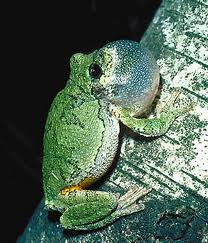
This past summer I was involved in a project where we examined the sexual behaviors of gray tree frogs (Hyla versicolor). Typically sexual selection studies are male-centered, focused on what traits in the males are preferred by females, and considers female preference static and invariable. The project I was involved with over the summer, however, looked at the intricacies of female preference, which, as a result of a male-biased science, has received little attention in the past.
Specifically, we were looking at what is called the terminal investment hypothesis. This is the idea that animals in varying condition will put different amount of resources towards reproduction vs. survival since animals vary in their amount of residual, or future, reproductive potential. Basically, this is the idea is that animals in worse condition or older age will put more resources towards reproduction than those in better condition or younger age since they have less of a chance to reproduce and pass on their genes in the future. This has been typically examined in males, where males of worse condition or old age put more resources towards sexual signalling so they seem just as attractive as better condition or younger males which may actually be of better quality. However, this could also be the case in females, where females are less choosy with their sexual preferences when they are older or in worse condition, taking on more risk of mating with low quality mates so that they can secure last-ditch reproductive opportunities. This is what we examined in the gray tree frog: does female choosiness vary with her age or body condition, both potential indicators of her residual reproductive potential?
This specific study shows me that the scientific community is open to shifting towards more inclusive research interests, not allowing male biases to be as prevalent research topics such as these in animal behavior. This gives me hope that, at least in the scientific community, there is an openness to considering topics such as homosexuality in research.
 RSS Feed
RSS Feed